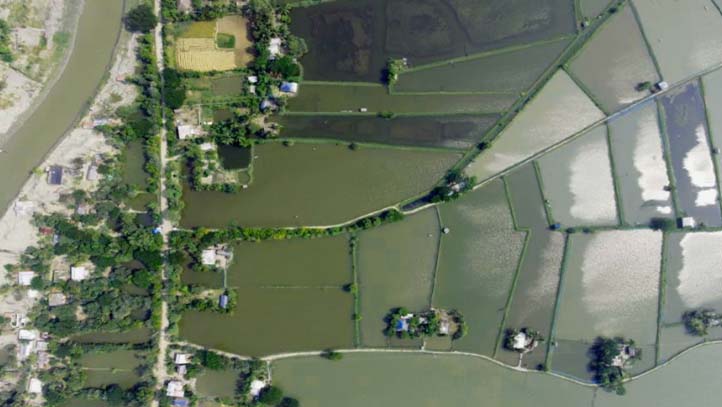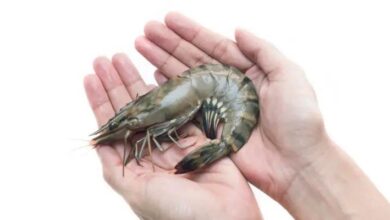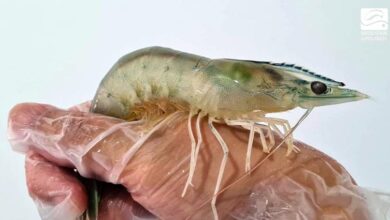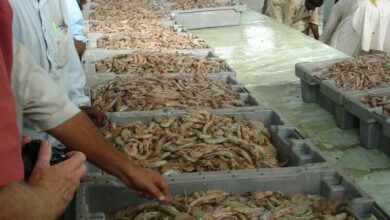
Khulna region has posted a remarkable surge in seafood exports for the 2024-25 fiscal year, recording a total export of 34,876.37 tonnes of shrimp and fish — up by 9,679.63 tonnes compared to FY 2023-24. According to the Fish Inspection and Quality Control (FIQC) office in Khulna, the region earned Tk 3,109 crore or approximately USD 257 million in FY 2024-25, a significant increase from the Tk 2,146 crore (USD 177.4 million) earned in FY 2023-24.
Shrimp Leads the Export Surge
Of the total export earnings in FY 2024-25, Tk 2,499 crore (USD 206.5 million) came from 19,512.79 tonnes of shrimp exports alone, up from 15,450.97 tonnes in FY 2023-24, which earned Tk 1,744 crore (USD 144.1 million).
Meanwhile, export earnings from other fish varieties rose from Tk 402 crore (USD 33.2 million) for 9,745.78 tonnes in FY 2023-24 to Tk 610 crore (USD 50.4 million) for 15,363.58 tonnes in FY 2024-25.
Species-wise Earnings Breakdown
The detailed breakdown for FY 2024-25 includes:
- Galda / Freshwater Giant Prawn: Tk 734.50 crore (USD 60.7 million) from 4,282.14 tonnes
- Bagda / Black Tiger shrimp: Tk 1,691.69 crore (USD 139.8 million) from 13,963.11 tonnes
- Soft shell Crab: Tk 173.27 crore (USD 14.3 million) from 1,166.89 tonnes
By comparison, in FY 2023-24:
- Galda shrimp exports brought in Tk 420.43 crore (USD 34.7 million) from 2,883.30 tonnes
- Bagda shrimp earned Tk 1,311.21 crore (USD 108.4 million) from 11,336.54 tonnes
- Soft shell Crab exports were Tk 97.87 crore (USD 8.1 million) from 644.77 tonnes
Challenges Holding Back Production
Despite the growth, the sector has faced several persistent hurdles — a decline in brackish water sources, virus outbreaks, lack of SPF (disease-free) shrimp fries, and farmers’ reluctance to adopt modern techniques. According to industry estimates, these challenges have caused production shortfalls that deprived the country of USD 25–41 million (Tk 300–500 crore) in potential export earnings.
Adding to the pressure, rising feed prices have increased input costs for farmers, further impacting profitability.
Government Support Fuels Renewed Hope
The government has been taking proactive steps, including promoting cluster farming methods, vannamei shrimp cultivation, environment-friendly aquaculture, and massive farmer training and incentives.
Farmer testimonies reflect growing optimism. Harun-ur-Rashid from Koyra Upazila credits the adequate rainfall and government virus prevention efforts for improved yields. Sheikh Mahtab Uddin from Dumuria noted that training programs, quality feed, and natural water bodies have helped increase fish production.
Previously, political interference and land grabbing disrupted shrimp farming activities in many areas. However, with improved governance and proper government action, farmers are returning to the business.
A Sector at a Crossroads
Inspector Lipton Sarder from the Khulna FIQC office noted that while shrimp production has been declining nationwide over the past five years, recent government steps have started reversing the trend. He emphasized the importance of cluster method aquaculture and the adoption of modern, sustainable farming practices.
Industry leader Sheikh Abdul Baki of Oriental Fish Processing Industries highlighted that quality inputs, natural water resources, and cluster farming are key to future success.
According to Md Zahangir Alam, Deputy Director of the Khulna Fisheries Department, the production and export of all categories — white fish (freshwater fishes), Galda, Bagda, and crabs — have increased notably in FY2024-25.




